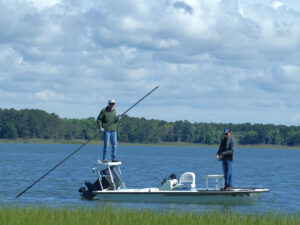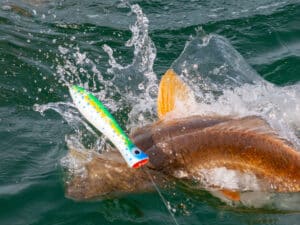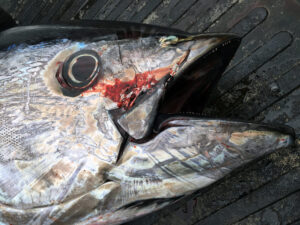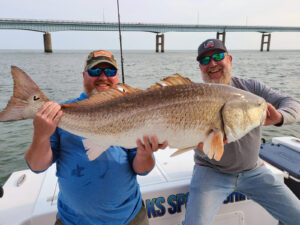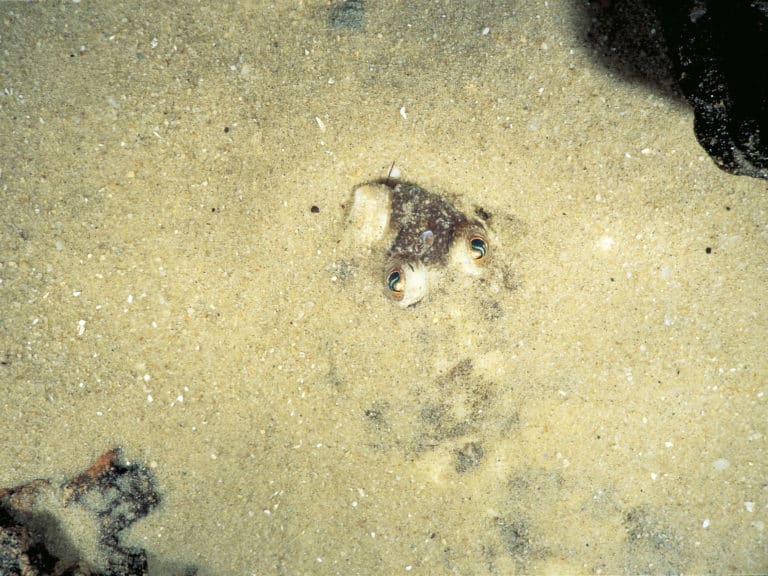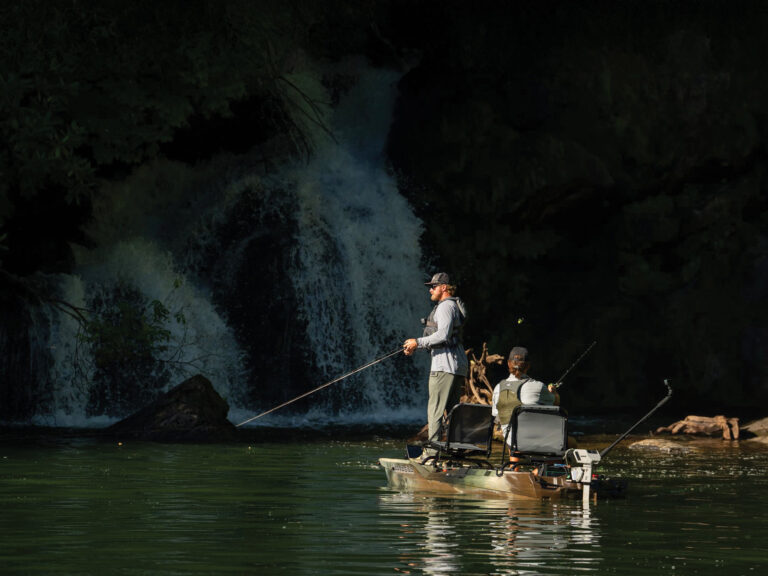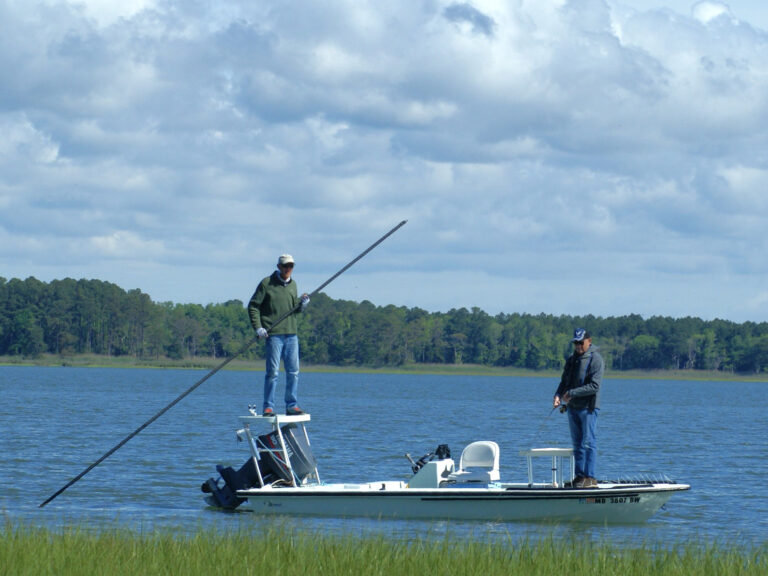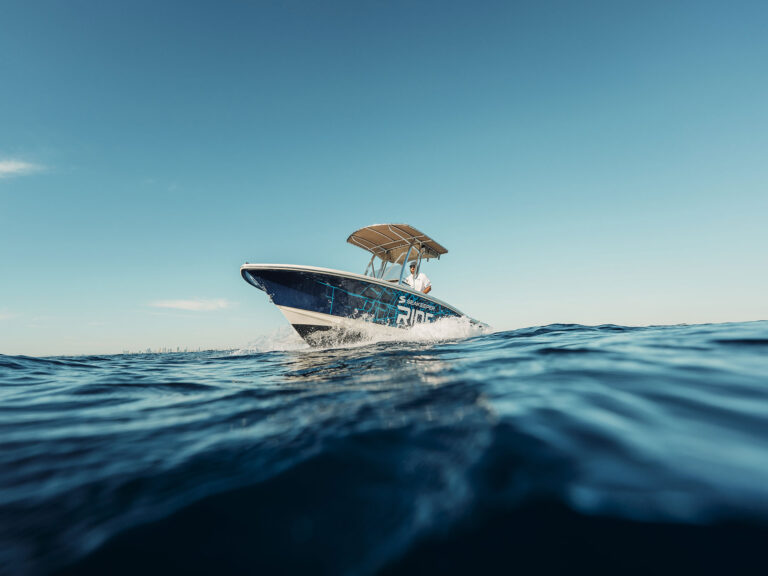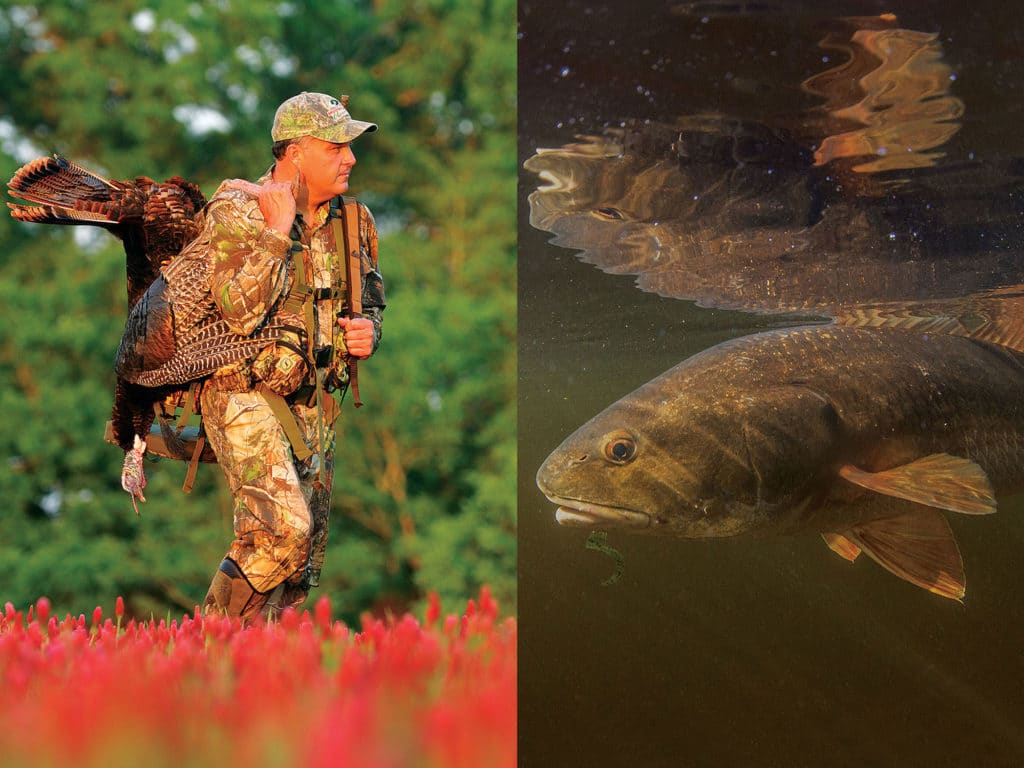
“I love my job,” my hunting guide whispered.
“So do I!” I chimed, giddy.
No telling what the turkeys were saying. Gobbles rang through the woods behind us. Whenever Dale Drury called, they answered.
We sat statue-still in the late-March dawn at the edge of a food plot in south coastal Georgia. As many as five gobblers yodeled, the sounds clashing, challenging, interrupting. Hens clucked and yelped. A massive flock of Easterns was assembling next to a creek just 50 yards away.
I knew they’d come to us. They had to. I strained my eyes to see them at the edge of the woods.
“We’re gonna get us one,” Drury asserted. “We just have to be patient.”
Be patient? I felt like a 5-year-old sitting through breakfast on Christmas morning.
Cast and Blast
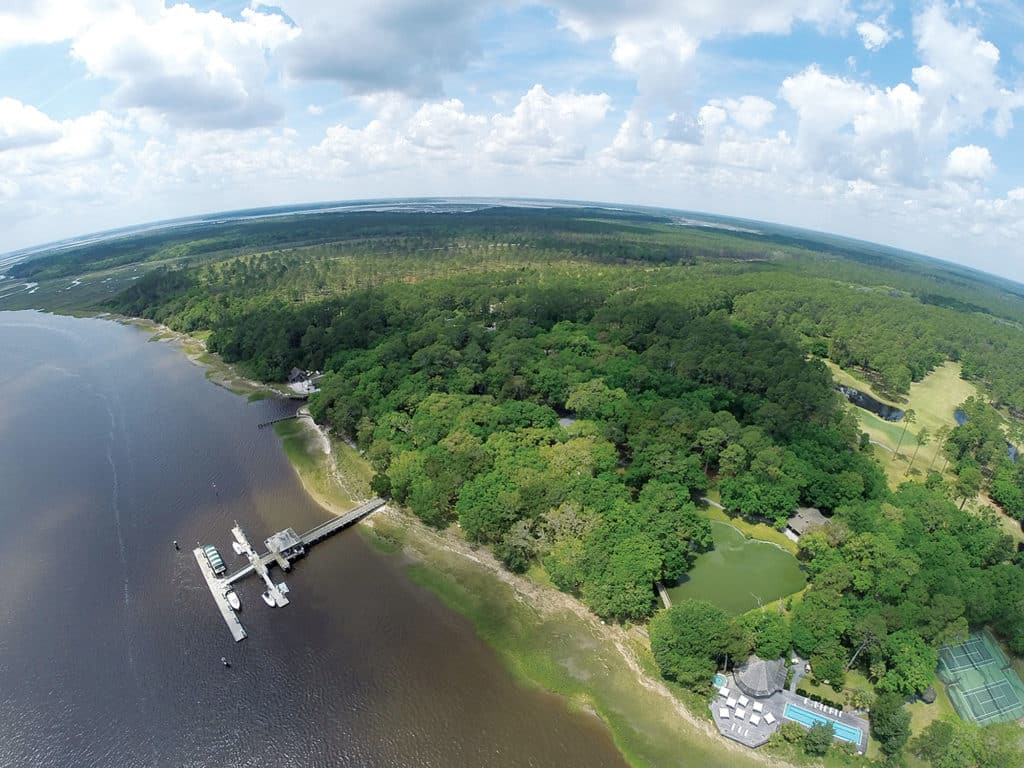
Hunting and fishing spark my passions for nature and discovery. I revel in their inherent and highly contagious side effect: anticipation. Many anglers I talk with feel the same. Blending both activities into one cast-and-blast trip ranks high on my list of must-take adventures.
I had set up my March-morning turkey hunt with Drury through Cabin Bluff Cumberland River Retreat, near Woodbine, Georgia. Later that afternoon, I would hop aboard one of the Bluff’s Pathfinder bay boats to cast live shrimp to redfish and trout.
Cabin Bluff is one of the few lodges along the East Coast where outdoorsmen and -women can enjoy a half-day trip afield paired with a half-day of saltwater fishing. States along the Gulf of Mexico offer more cast-and-blast locations, but often their opportunities remain limited to duck hunting and inshore fishing since both take place in or near coastal marshlands.
At Cabin Bluff, I could have chosen quail hunting — a traditional Georgia pastime — turkey hunting, or deer and hog hunting. Upland forests lie in close proximity to marshes in this region.
Originally opened as the Camden Hunt Club in 1827, Cabin Bluff wears a timeless feel with its spreading oaks and dappled sunlight, its marshfront breeze and still, quiet soot-black nights.
The lodge lies near the end of a rural road about 9 miles east of Interstate 95. Its 24,000 acres insulate the retreat from the bustle of places like Jacksonville, Florida, 46 miles south.
During my trip, I heard no traffic sounds and saw no signs of workaday endeavor. The woods, however, came alive with the sounds of owls, squirrels, songbirds and, of course, turkeys.
Crazy Birds
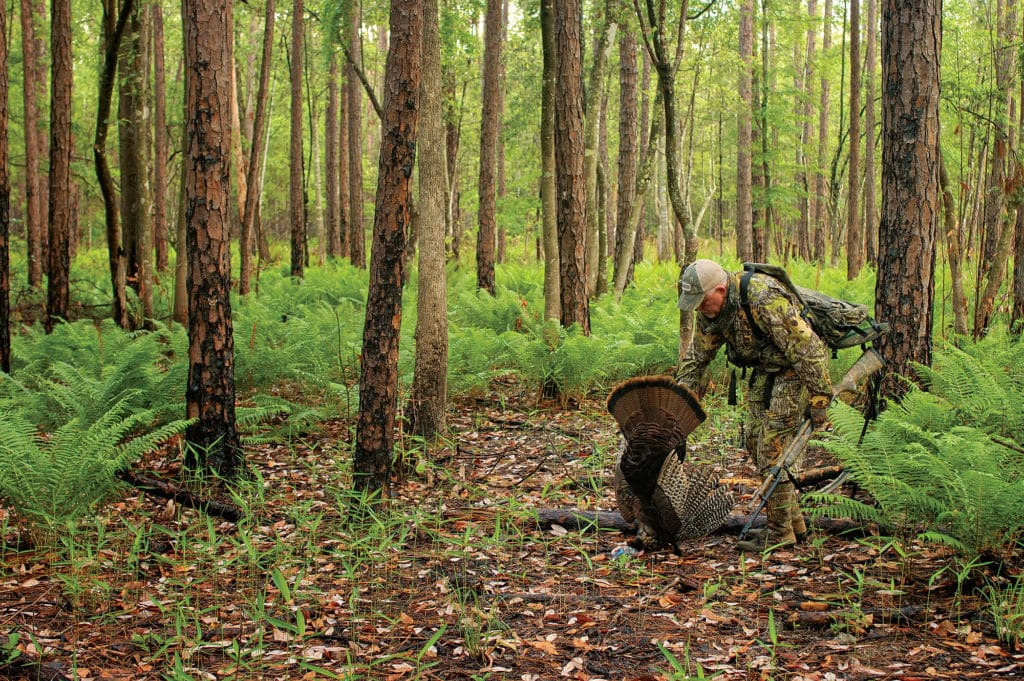
As the morning light turned yellow, I saw a green food plot spread out ahead of me like fingers on a gloved hand. Drury had built me a palm-frond blind so I could move enough to prepare a camera or a shotgun.
What a dilemma. My job called for me to shoot photos but also to shoot a turkey. I rested my 12-gauge Beretta on a monopod and kept my Nikon camera at my right hip. And we waited. The gobbling continued.
Finally, I saw a lone hen slip off, crossing the end of the food plot about 100 yards away. And then another one. About 8:45 a.m., the gobbling waned and then stopped.
The gobblers, clearly henned up, simply had ignored our pleas. That morning, a bird in the hand was well worth one or two — or 20 — in the bush. But my hopes had plummeted.
The wind started to mount, so Drury and I trudged back to his truck. We drove a few miles over dusty roads to some select locations where Drury stopped to call and listen. No luck.
Plan C: We headed to a shady oak hammock to set up where the birds could still, hopefully, hear our calling over the wind.
Turkey Calls
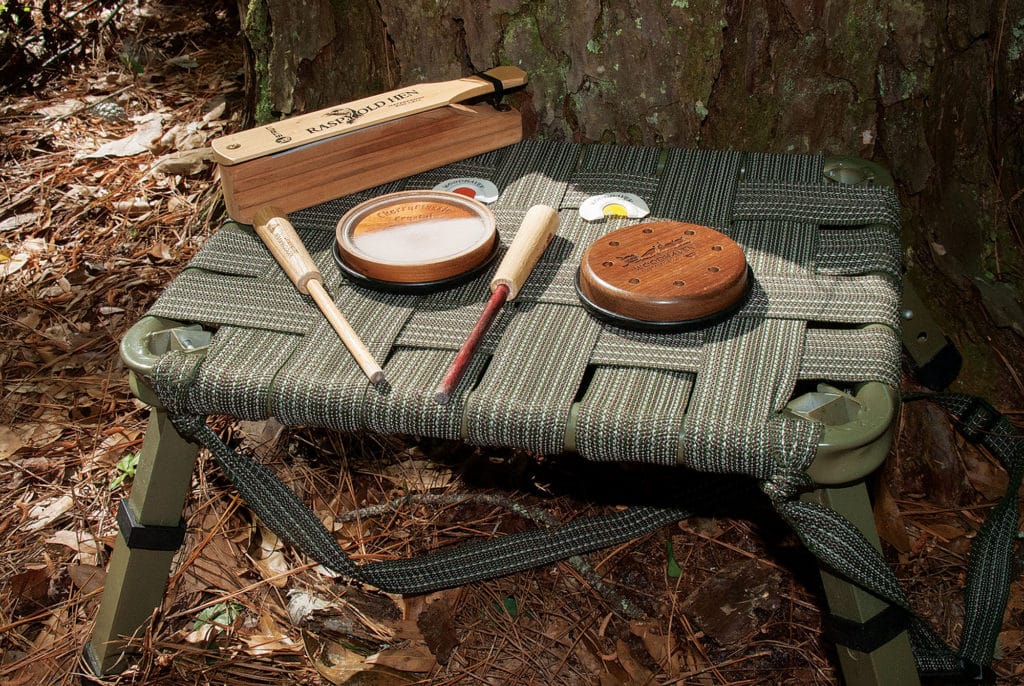
The wind’s whistle and the swaying of green branches combined with the warming sun to overload my eyelids. I longed to shift my legs, but perched on a low campstool with my back against a tree, I could not risk movement.
I had brought my slate call to use, but Drury, using a diaphragm mouth call, already sounded like half a dozen different hens. I decided to keep my turkey mouth shut.
The turkeys reciprocated.
Afternoon Action
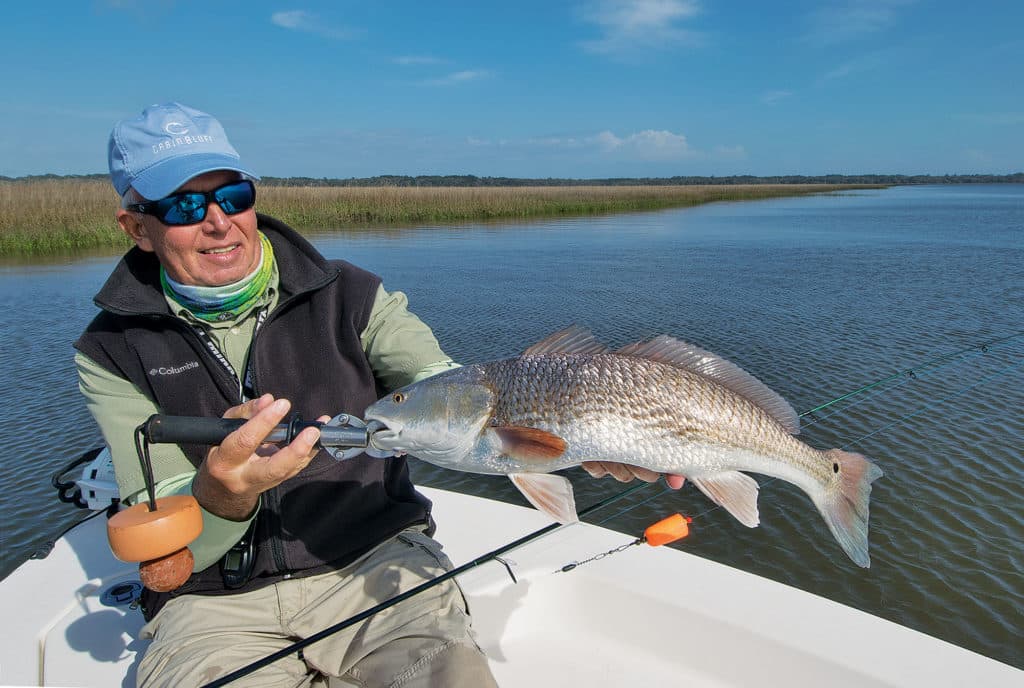
Back at the lodge, we shared stories with two other hunters and their guide, who had set up on another part of the property. Drury and I had definitely experienced the better show.
“Tomorrow,” we all said to one another, sitting down to a five-star lunch of fall-off-the-bone pork ribs, haricots verts (thin green beans) and roasted red potatoes.
My fishing guide, Toby Mohrman, joined us at the communal lunch table, and we discussed how we might fish the afternoon. A stiff north wind meant we’d have to find sheltered creeks if we wanted to properly present a bait. We’d also need to wait until the tide change at about 2:30 p.m.
Late March can be a turning point for fishing this region. Cold winter water begins to warm, and the usual suspects, redfish and trout, ride the dramatically rising and falling tides to feed at oyster bars and in potholes and flooded marshes. As spring continues, bull reds stage along the beaches and tripletail migrate to the shallows off nearby Jekyll Island, where anglers sight-cast to them with live shrimp, artificials and flies.
Trout Too
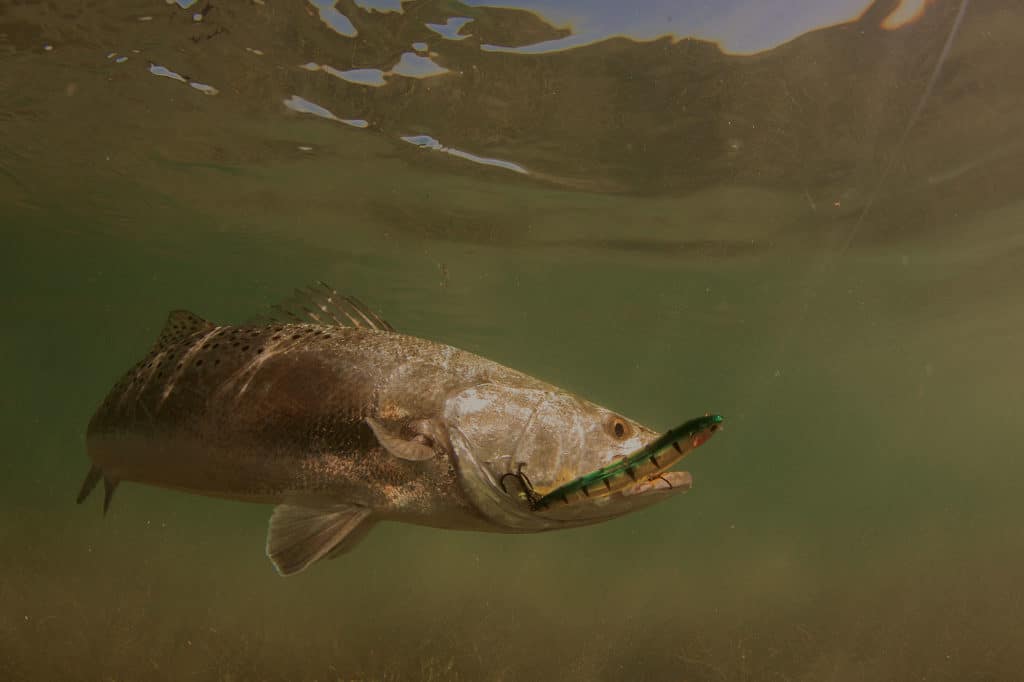
Fall, when most hunting seasons begin, brings another influx of bull reds to shoals and sandbars. The winter trout bite can be legendary by its numbers, though locals rarely see fish above 3 pounds. (Exception: The state record, taken in the 1970s, weighed 9 pounds, 7 ounces.)
Mohrman and I shoved off the floating dock at Cabin Bluff to scout some nearby shell points at the mouths of feeder creeks, using the Minn Kota trolling motor and its Spot-Lock feature. Mohrman handed me a St. Croix Tidemaster rod with a Penn Conflict spinning reel, spooled with 15-pound PowerPro. He had tied on a Paradise Popper popping cork, a ¼-ounce bead-chain swivel, and two feet of 20-pound fluorocarbon leader attached to a No. 2 Kahle hook.
Species and Seasons
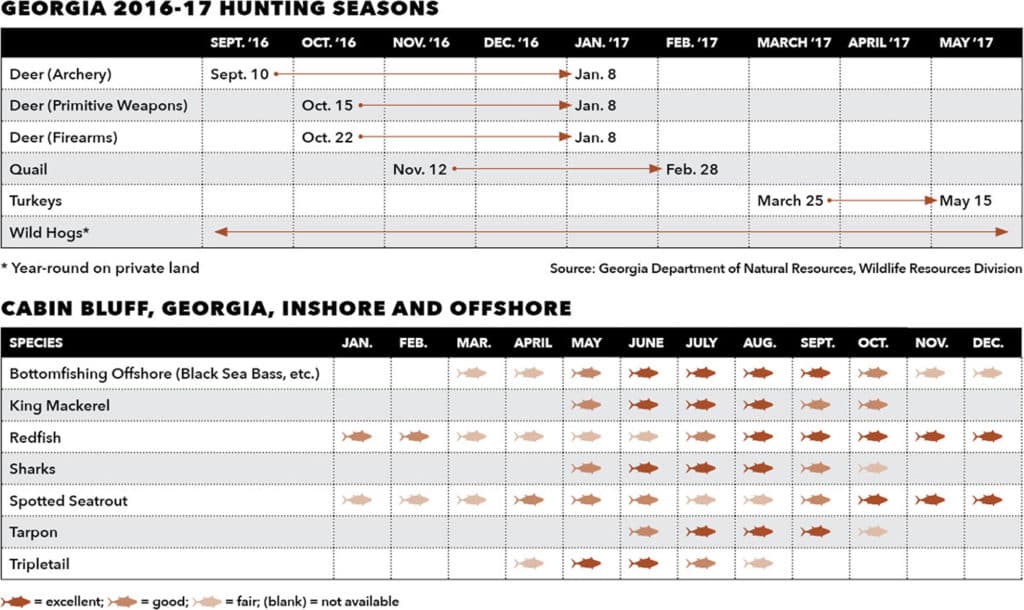
Water turbidity is an issue in south Georgia, with twice-daily high and low tides of 6- to 9-foot amplitude, so live baits usually score with greater frequency. We pinned live shrimp to our hooks and began to cast into the brown-green water.
I picked the outer edge of a creek mouth, where the deeper water lay almost still. A legal-size redfish nailed the shrimp and raced toward the marsh grass. Fortunately, I had the creek current working for me, and the legal-size red thrashed boat-side after a few minutes — a thrilling battle on light gear.
Georgia regulations limit anglers to five redfish per person per day, each measuring 14 to 23 inches in total length. My red pushed the top end of that limit, but we released it and a handful of school-size seatrout in just a few hours.
Just Teasing
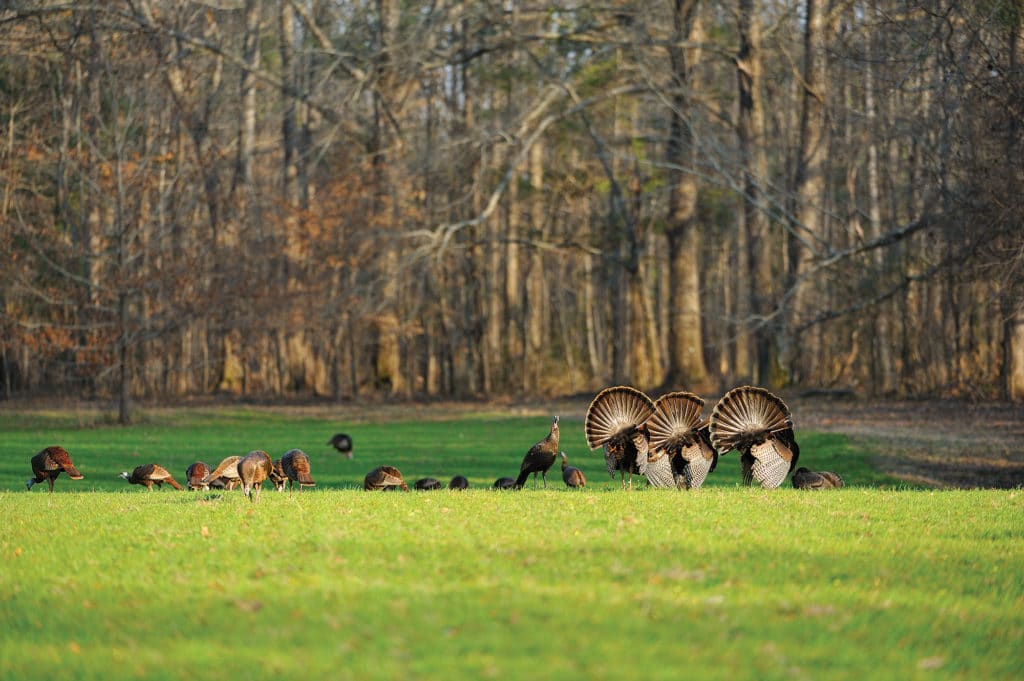
Turkey hunting is its own means to an end. The thrill of scouting birds and then hearing a gobbler respond to your calls makes for a great day in the woods.
If you see a gobbler strutting, whether in the distance or at your decoy spread: bonus points. If you lure him to within 25 yards: heart-pounding exhilaration. And then, if you make a perfect shot and score a mature bird: That makes the whole season.
Drury and I set out on day two with high hopes of encountering our flock again at the same location. “I might have called too much yesterday,” he said, second-guessing. “That might have driven the hens off, so the gobblers went with them.”
He pledged a vow of near silence.
So did the birds.
Fewer clouds today meant we’d face a brighter morning. Drury let rip with an owl hoot when he exited the truck. Silence. We felt more than saw our way down a path toward our blind. Drury set up a single hen decoy and a strutting gobbler. We waited.
Minutes passed toward fly-down time. Finally, Drury clucked. Emptiness. He rapped out a perfect yelp. Nothing. By 7:10, we had picked up our gear and headed to the truck.
Run ‘n Gun
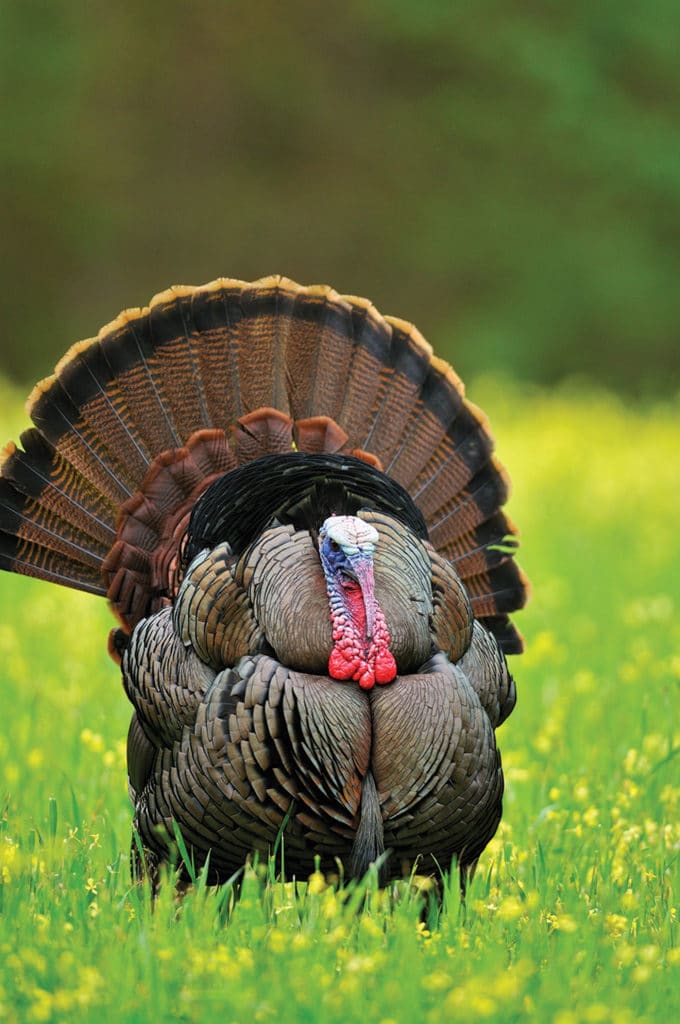
Our strategy switched to what we anglers call run ’n’ gun. We drove to half a dozen likely spots, where Drury got out, walked a ways and called. We even busted a gobbler on our way to one location. We watched his head bob through the bushes.
By 7:55, we had built a quick palm-frond blind on the edge of a dome-shaped food plot. An hour passed, but suddenly I heard a clucking sound, and it wasn’t coming from Drury. As the hen approached through the woods, we heard one lone long-off gobble. I sat tight.
The hen stepped out of the woods a mere 10 yards to my left and walked close enough in front of me that I could have tapped her with my shotgun. Drury clucked softly and purred. The hen pecked at the dirt in front of me.
I didn’t allow her to transfix me, though. My thoughts and my peripheral vision focused on anything that might be following her.
As the hen moved into the field and off into the far woods, Drury stood up. He called back toward the woods. Futile as that proved, we had enjoyed two beautiful mornings in the woods, and I still had a fishing trip to enjoy that afternoon.
The Moral
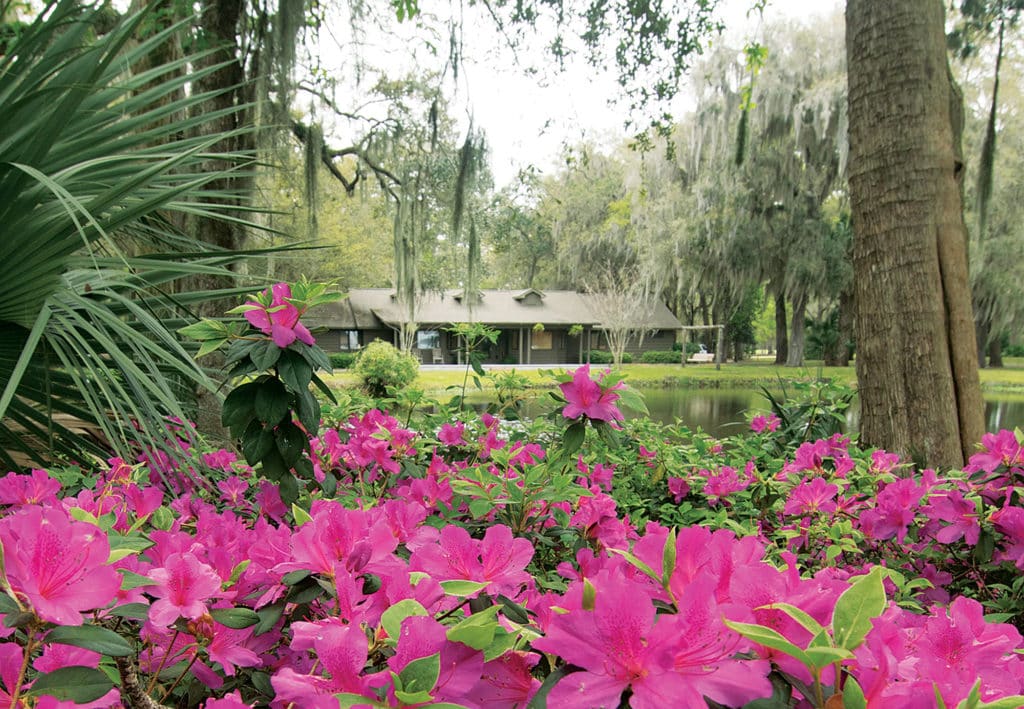
My afternoon on the water started off blustery again, but this time we found productive trout holes near the shady western shoreline of Cumberland Island. Cabin Bluff lies just across the marsh from Cumberland, which gained renown during the last decade as the location of John F. Kennedy Jr. and Carolyn Bessette’s wedding.
Mohrman provided a running dialogue about the wealthy industrialists who used to winter there — folks with names like Carnegie and Rockefeller.
Once the tide started to move, the trout started to bite. We quickly fought and released a dozen more schoolies in a late-day flurry.
While other locations offer clearer water where trout more readily and frequently take a topwater bait or jigged soft plastic, the tried-and-true popping cork provides its own allure. It takes me back to the eagerness of childhood, when I just knew that by sheer force of will, I could force that bobber underwater.
And that’s what it’s all about, anyway. Right?
Cabin Bluff Cumberland River Retreat
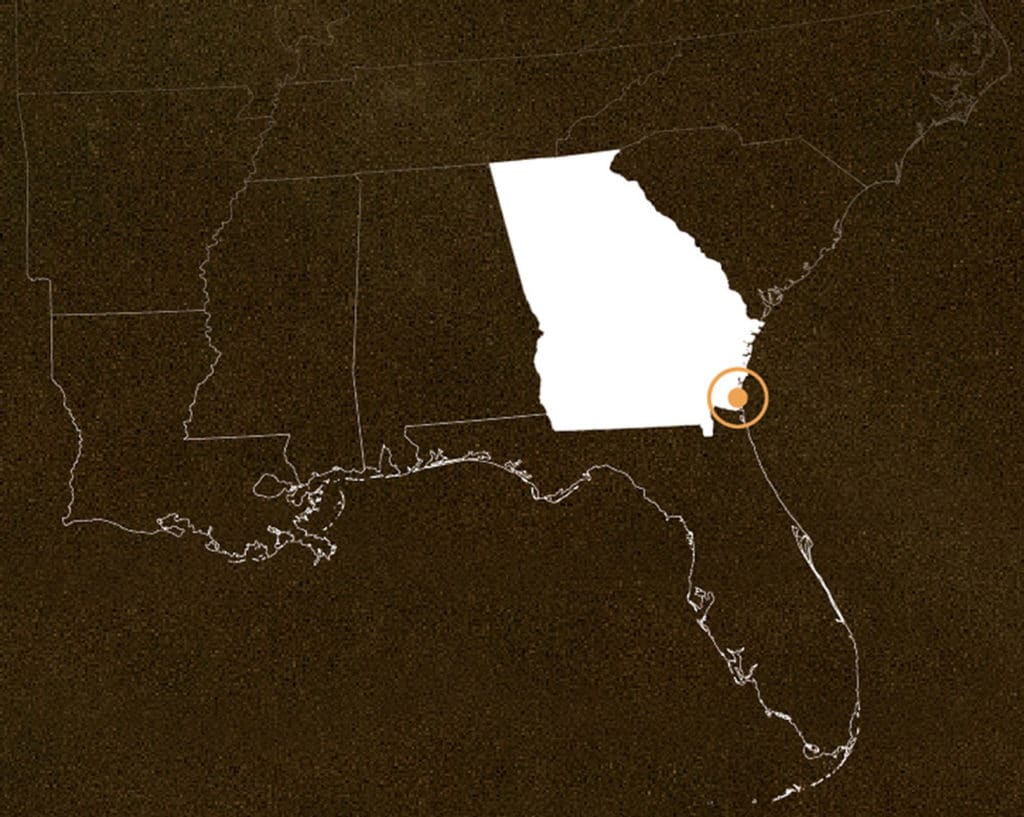
Our predecessors knew how to enjoy the outdoors. Cabin Bluff testifies to a tradition that grew from what was once a true necessity: capturing game for food.
After the John Floyd family cleared and cultivated this land in the early 1800s, they founded the Camden Hunt Club, credited as the first members-only hunting club in the United States. After war and new ownership, the land reverted to forest and then to logging property. But in 1928, Howard Coffin started Cabin Bluff as a world-class hunting and fishing destination.
In 2010, the Bluff opened as a public destination accommodating 40 guests in eight cabins and 20 private rooms. A conference center, swimming pool and golf course — 18 holes uniquely designed around six greens by golf pro Davis Love III — plus a sporting-clays course and five-stand setup add to the recreational opportunities.
Anglers and hunters fly into Jacksonville, Florida, or Brunswick, Georgia, and drive about 30 to 40 minutes to the lodge, which is 9 miles east of Interstate 95 near the town of Woodbine, Georgia.
A basic three-night stay at Cabin Bluff starts at $1,950 per room, including all meals and beverages. A sample two-morning turkey-hunting package, including one inshore fishing trip, sporting clays and five-stand shooting, golf, and all meals and beverages costs $2,475 for one hunter, $3,285 for one hunter and one nonhunter, or $4,770 for two hunters.
Anglers do not need a fishing license to fish with the licensed guides at Cabin Bluff. Call 912-729-5960 or visit cabinbluff.com.
Eastern Wild Turkeys
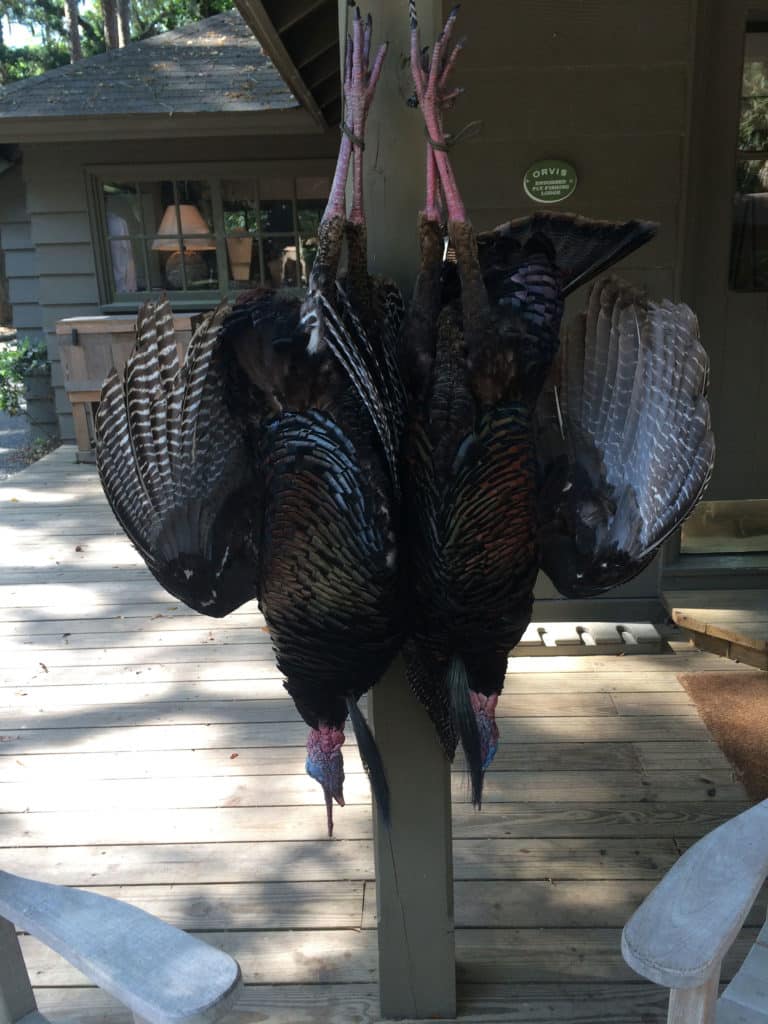
Among the six turkey subspecies, the Eastern wild turkey — found throughout Georgia — covers the greatest geographic region, thriving in 38 states and some Canadian provinces, according to the National Wild Turkey Federation.
Easterns feature chestnut-brown tail-feather tips, white-and-black bars on their wings, and the longest beard of all subspecies. Male gobblers weigh 18 to 30 pounds while female hens weigh 8 to 12 pounds. The NWTF says Easterns are second in difficulty to Florida’s Osceola turkeys when it comes to calling them to the decoys.
Georgia’s 2017 spring turkey season will run March 25 through May 15. Statewide, hunters are allowed three gobblers per season (though Cabin Bluff permits two per guest per season). Nonresident hunters must possess a hunting-and-fishing combo license ($20 for three days; $100 annually), a big-game license ($90 for three days; $195 annually) and a free turkey harvest record. Visit georgiawildlife.com for information about resident licensing.
Cabin Bluff provides shotguns and shells, although guests can bring their own firearms if desired.

